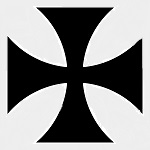Corgi AA38302 German Fokker Dr.1 Triplane Fighter - Lothar Freiherr von Richthofen, Jasta 11, 1917 (1:48 Scale)
"He is a 'shooter' rather than a 'hunter.'"
Baron Manfred von Richthofen, discussing the gunnery skills of his brother Lothar
 The Fokker Dr.I Dreidecker (triplane) was a World War I fighter aircraft built by the company of Anthony Fokker, and designed by Reinhold Platz. It became most famous as the plane of the Red Baron, Manfred von Richthofen.
The Fokker Dr.I Dreidecker (triplane) was a World War I fighter aircraft built by the company of Anthony Fokker, and designed by Reinhold Platz. It became most famous as the plane of the Red Baron, Manfred von Richthofen.
In April 1917, the Royal Naval Air Service (RNAS) introduced the Sopwith Triplane. Their debut was sensational and they swiftly proved to be superior to the Albatros and Halberstadt scouts then in use by the German Air Service. Soon the German pilots were clamouring for a triplane of their own. The majority of the German aircraft manufacturers, including Pfalz, AEG, DFW, Schütte-Lanz, and Euler, responded with new triplane designs. Most displayed little promise, though limited production of the Pfalz Dr. I was undertaken.
Fokker responded with the V.3, a small rotary-powered triplane with a tubular steel frame fuselage and thick cantilever wings. Fokker found several deficiencies in the V.3, particularly regarding control forces. Instead of submitting the V.3 for a type test, Fokker produced a revised prototype designated V.4. The most notable changes were horn-balanced ailerons and elevators, as well as wings of increased span. The V.4 also featured interplane struts, which were not necessary from a structural standpoint, but which had the effect of minimizing wing flexing. The V.4 proved highly manueverable and much superior to the triplane prototypes submitted by other manufacturers. The rudder and elevator controls were powerful and light. Rapid turns were facilitated by the triplane's directional instability. The ailerons were also light, but not very effective.
After a type test, an immediate production order ensued. The V.4 prototype was intentionally destroyed in static structural tests. The two pre-production examples, designated F.I, were delivered in the middle of August 1917. These were the only machines to receive the F.I designation. Delivery of production machines, designated Dr.I, commenced in October of that year.
Pictured here is a 1:48 scale replica of a German Fokker Dr.1 triplane fighter piloted by Lothar von Richthofen of Jasta 11 during 1917.
Sold Out!
Dimensions:
Length: 6-inches
Wingspan: 7-1/2-inches
Release Date: April 2009
Historical Account: "Kid Brother" - Lothar-Siegfried Freiherr von Richthofen (September 27th, 1894 - July 4th, 1922) was a German First World War fighter ace credited with 40 victories during the war. He was younger brother of top-scoring ace Manfred von Richthofen (the Red Baron) and a cousin of the Luftwaffe field marshal Wolfram von Richthofen.
Lothar started the war as a cavalry officer with the 4th Dragoon Rgt. In October, while stationed at Attigny, he was awarded the Iron Cross 2nd Class. In November 1914, his regiment transferred to the Eastern Front.
Lothar transferred to the German Army Air Service (Luftstreitkrafte) in late 1915. He served as an Observer with Kasta 23 for a year from January 1916 and saw action during the Battle of Verdun, before he trained for his pilot's license. Lothar was awarded the Iron Cross 1st Class in December 1916.
His first posting as a pilot was to his brother's Jasta 11 on March 6th, 1917. Lothar's first victory claim was a FE 2b of No. 25 Squadron on March 28th, 1917.
Flying during the period of German dominance known by the Royal Flying Corps as Bloody April, by the start of May Lothar had scored some 16 victories. When Manfred went on leave, Lothar assumed command of the squadron. Manfred considered his brother rather reckless, describing him as a "shooter" rather than a "hunter".








![USAF Boeing F-15C Eagle Multi-Role Fighter - 78-0509, 65th Aggressor Squadron, 57th Wing, 2012 "Digital Splinter Scheme" [Aggressor Scheme] (1:72 Scale)](http://cdn4.volusion.store/qh9e9-jdqv9/v/vspfiles/photos/HA4556-1.jpg?v-cache=1740197136)
